| Content | An 8-channel stereo summing mixer with 12AX7 tubes for sonic excitement, the Radial Space Heater can add incredible depth and harmonic richness to your tracks. Recording engineers at Sweetwater know that summing in the analog domain, as opposed to within your DAW, is a great way to get that big-console sound. The Space Heater's variable tube overdrive allows you to add everything from subtle transformer warmth to rich harmonic distortion. From gluing individual drum tracks into a cohesive kit to mixing down your final stems, the Radial Space Heater will add a great sound to your productions.
Tubes and transformers are just what your digital tracks need
No matter how well you record your tracks, or how you approach your mixes in your DAW, it's hard to beat the undeniably rich and deep sound that summing in the analog domain is known for. Instead of investing in a large analog console, a summing mixer like the Radial Space Heater is the perfect match for DAW-based studios. The transformer-coupled outputs add a touch of warmth, and variable tube overdrive is perfect for adding sparkle to vocals, depth to acoustic instruments, and even full-on distortion for extreme effects. Send your stems through the Space Heater, record the stereo mix back into your DAW, and you'll be impressed with the results.
Variable voltage for fine-tuning the tube sound
The Radial Space Heater not only gives you variable tube overdrive for each stereo input pair, but it also allows you to switch between 35-volt, 70-volt, and 140-volt operation. Use the 35-volt setting for maximum grit and distortion, or switch over to 70 volts for cleaner headroom and a smoother sound. When you want the cleanest headroom, switch over to 140 volts. You can adjust the voltage for each stereo input pair individually, which means you can add gritty overdrive to rock vocals while giving bass and drums tons of clean headroom for a deep, punchy sound.
Two useful studio tools in one
One look at the back panel tells you that the Radial Space Heater is ready to be a studio workhorse. Each of the eight channels can be set up as a hardware insert, which means you can send individual tracks through the Space Heater to add tube saturation and transformer warmth. Once your individual tracks are perfect and you're ready to sum your final mix, run your stems through the Space Heater and record the final stereo mix to your DAW. The Space Heater is effectively a smart combination of four outstanding tube/transformer modules plus an analog mixer.
Radial Space Heater 8-channel Tube Summing Mixer Features:
- Stereo summing mixer for adding warmth, depth, and harmonic richness
- A 12AX7 tube for each input pair lets you add anything from subtle sparkle to full-on distortion
- Transformer-coupled outputs add a touch of character while maintaining a high-quality, low-noise signal
- 3 adjustable voltage modes (35-volt/70-volt/140-volt) allow you to adjust how much clean headroom you have before distortion begins
- Use it as an analog summing mixer or as 4 individual tube saturation/transformer warmth modules
- Multiple units can be linked for higher channel count
| SSL UF8 Advanced DAW Controller
The SSL UF8 is an advanced DAW controller designed to fit the needs of DAW-based workflows and ultra-fast turn-around times. The SSL UF8 features 8, 100mm touch sensitive faders, 8 endless rotary encoders and 43 assignable keys. An expandable 8-channel advanced DAW controller, UF8 connects engineers, producers and artists directly to the creative process, offering absolute command of their workflow and significantly accelerating the speed of audio production and content creation.
Advanced Workflow
UF8 offers intuitive features that are developed from a true understanding of production workflow. Take ultimate control with simultaneous access to multiple DAW sessions, and precise navigation with a multi-purpose Master Encoder for DAW timeline access, track banking and mouse wheel emulation. 'Dual-purpose Selection Keys permit rapid access to select functions as well as solo and mute clearing in Pro Tools and Logic Pro. New CHANNEL and PLUG-IN control modes provide enhanced workflows for those using UF8 with Pro Tools, with easy access to sends and plug-ins without slowing down your creativity.
Configurability
Each UF8 comes equipped with 43 assignable user keys set across 5 configurable banks, allowing users to configure their essential keyboard shortcuts and macros for total session control. Add multiple controllers to create your unique mixing system; build your perfect 16-24 channel music creation hub, or connect 4 UF8’s within a single system to create a 32-channel controller ideal for large post production or mixing sessions. Multiple UF8s can be chained together using the THRU port and provide a safe place for iLok storage. For perfect positioning, each UF8 includes an adjustable stand allowing for six different angles of elevation for user defined placement. 19” rack mount kits are also available for installation into an ORIGIN console center section or other 19” studio racking.
360° Control
SSL’s new 360° software application provides fast configuration and admin control of your UF8. With an expanded system, ‘drag-n-drop’ configuration gives quick and dynamic access to each individual controller set up. Customise workflows and define up to 3 different DAW layers for simultaneous session control, with all changes managed without getting in the way of your productivity.
SSL UF8 Features:
- High-quality 100 mm touch sensitive faders
- High-resolution colour displays
- All metal enclosure, finished with a brushed, anodised top plate
- 8 Endless Rotary Encoders
- Custom Workflows with 43 assignable keys per UF8; 5 banks of 8 User Keys + 3 Quick Keys
- Intelligent Multi-Purpose CHANNEL Encoder
- Mouse Scroll Emulation; control of any plug-in parameter you hover the mouse over with absolute precision
- Integrates With All Major DAWs with workflow ready templates
- Pro Tools | Logic Pro | Cubase | Ableton Live | Studio One
- Hi-Speed USB connectivity
- Switch Control between 3 Simultaneously connected DAWs
- Bundled with SSL Native Vocalstrip 2 & Drumstrip plug-in
| If you're seeking to take your projects to a level on par with world-class analog consoles, the AMS Neve 8816 will lead you to new sonic frontiers and beyond. The 8816's handbuilt, handwired 16-channel mixer employs the same transformer-balanced mix bus circuitry as a '70s-era Neve 80-series console, infusing every signal that flows through it with increased headroom, punch, and dimensionality. The 8816 does more than mere analog summing, however. This feature-laden box also includes cue mixing, metering, per-channel solo/mute, and talkback functionality. Its capable monitoring section includes a volume knob, an auxiliary input, dual headphone outputs, and alternate speaker outputs. Beyond that, the 8816 includes a main stereo insert send/return for strapping a compressor, EQ, or other processing across your entire mix, while its unique Width knob gives you a level of control over your mix’s stereo field that’s generally reserved for top-level mastering facilities. Craving tactile, hands-on control over your mix? Add an 8804 Fader Pack (sold separately). The 8816 also includes a USB port for saving and recalling settings to and from your computer, plus a digital I/O option, which provides you with A/D conversion (option card sold separately).
Inject your projects with the unmistakable Neve sound
Vintage Neve 80-series consoles are simply legendary. Watch Dave Grohl’s Sound City documentary for definitive proof, or listen to any of the countless chart-topping recordings that were made with one. Elton John, Steely Dan, Nirvana, Pink Floyd, Dire Straits, George Clinton, Chick Corea, Grateful Dead, REO Speedwagon, Cheap Trick, Foreigner, Tom Petty and the Heartbreakers, Pat Benatar, Santana, Ratt, Rage Against the Machine, Tool, Slayer, Kings of Leon, Slipknot, Elvis Costello, Everclear, Mastodon, and many other artists were recorded or mixed on a Neve 80-series console. The AMS Neve 8816 contains genuine 80-series topology, boasting two custom Neve Marinair specification transformers on its stereo mix bus. Whether you use it for tracking and overdubbing, submixing and summing, or mastering, the 8816 will infuse your projects with the authoritative sound of a classic Neve console. All the sonic hallmarks are present: the heft, the muscle, the three-dimensional non-linearities — enabling you to add color and vibrancy to every project.


16 feature-packed channels of classic Neve character
The AMS Neve 8816 is centered around a feature-rich 16-channel analog mixer. Each channel boasts a line-level input with a rotary Level control, a rotary Pan control, a Cue button, and a Cut/Solo button. The Level knob, which accommodates both +4dBu and -10dBV sources, ranges from ∞dB to +15dB with 0dB set at approximately 12 o’clock. The Pan knob offers smooth, progressive operation with -3dB center attenuation. The Cue button sends the channel’s input, pre-fader, and pre-pan to the 8816’s cue mix. Channels 1–14 are individually switchable to the cue mix, while Channels 15–16 are stereo linked. At Sweetwater, we’ve found channels 15–16 incredibly useful for playback of a rough 2-track artist mix while overdubbing. The Cut/Solo button enables you to mute or solo a track. Since the 8816’s solo system is latching, you can also build solo groups, then use the master Cut/Solo button to audition or mute a group — a must-have feature when comping or sorting out EQ or balance problems.
A full-blown Neve console in a 2U rackmount format
The sheer number of the 8816's mix send/return options is enough to make your head spin, in a good way. Place a stereo compressor, EQ, or other processing across your entire mix, or create a parallel return for New York-style compression. Access high-end, mastering-studio-level stereo image enhancement with the Width control. Route the 8816’s 2-track return to its cue mix, or replace your headphone cue mix with the main monitor mix. The insert return and 2-track return feature independent level controls, providing you with near-endless customization. You can also put the 8816’s sends/return in Mid-Side mode. There’s even a hidden talkback mic that you can engage with a push of the 8816’s headphone level knob. With all of this complexity, you may be concerned that you’ll lose your settings. Don't worry: the 8816’s USB port allows for easy recall of your settings via control software on your Mac or PC. And if you need more inputs, you can cascade up to 32 units for up to 512 channels.

Comprehensive monitoring section
The AMS Neve 8816’s comprehensive monitoring section puts it at the very heart of your studio. You get four monitoring sources: the 8816’s 2-track return, channels 1/2 (pre-fader), its auxiliary input, and your main monitor mix. A Mon Level knob allows you to calibrate your mixing levels (we recommend aiming for 85dB), while a Mix Level knob controls the output level to your DAW. Main/alternate speaker outputs enable you to reference your mixes on a second set of studio monitors. The 8816’s dual headphone outputs are wired in parallel, one on the front panel and the other on the rear, where there are also balanced line outputs for feeding a separate headphone amp. You also get two quasi-PPM VU meters fed from the 8816’s main outputs, along with analog and digital clip indicator LEDs.
The legend continues
At Sweetwater, the name Neve commands reverence. Rupert Neve started designing audio equipment in the tube console era but made his mark with solid-state designs. Setting up shop in Little Shelford in the ’60s, Mr. Neve faced many obstacles establishing his brand amid a new technological landscape. Transistors were new, expensive, and difficult to obtain in quantity in the UK. Reliable faders didn’t exist yet — a far cry from today’s world, where parts are affordable and readily available from multiple suppliers, all competing to win bids. Nevertheless, Rupert persisted. And by the early 1970s, the Neve company was humming along, taking orders and building custom transformer-balanced consoles for recording and broadcast studios the world over.
Neve 80-series consoles had a huge, punchy, and authoritative sound that defined the sound of ’70s rock. From London to New York to Los Angeles and beyond, top studios were installing Neve desks as fast as they could. By 1978, with the introduction of the majestic 8078 — the pinnacle of handwired analog “production” consoles — and NECAM automation system, Neve boards were the main component of the success formula for any recording studio with world-class aspirations. In the decades since, AMS Neve has innovated with groundbreaking products such as the VR, VX, and 88R series consoles. And today, the company continues to advance the state of the art with cutting-edge pro audio gear that sounds incredible and intelligently addresses the challenges of the digital age.
AMS Neve 8816 Summing Mixer Features:
- Packs the sound and functionality of a Neve console into a 2U rackmount unit
- Contains genuine Neve 80-series topology, including 2 custom Marinair transformers
- Ideal for tracking, overdubbing, submixing, summing, and mastering alike
- 16 channels of analog summing add color and vibrancy to every project
- Each channel boasts rotary Level and Pan controls, plus Cue and Cut/Solo buttons
- Mix insert points for adding effects to individual channels
- Comprehensive cue mixing for creating custom-tailored headphone mixes
- Main stereo insert send/return for adding processing to your mix bus
- Width knob supplies high-end-mastering-studio-level stereo image enhancement
- Main/alternate speaker outputs enable referencing on a second set of studio monitors
- 2-track return, auxiliary input, and dual headphone outputs
- Sends/returns boast a Mid-Side mode for added flexibility
- Hidden talkback mic is engaged with a push of the headphone level knob
- 2 quasi-PPM VU meters for the main outputs, plus analog and digital clip indicator LEDs
- USB port allows for recall of your settings via control software on your Mac or PC
- Cascade up to 32 units for up to 512 channels
- 8804 Fader Pack gives you tactile, hands-on control over your mix (sold separately)
- Digital I/O option provides A/D conversion (option card sold separately)
| The Ultimate Desktop Mixer Legendary SSL studio tools redefined and streamlined
To the casual observer SiX looks like any other compact desktop mixer. Look a little closer and like all SSL consoles, SiX reveals a carefully considered feature set that is driven by an obsessive desire for total flexibility, to encompass every creative eventuality. It may be small but SiX is a classic SSL design. It carries the DNA of 40 years of true expertise in creative studio workflow. Listen to SiX and you will experience the impeccable sonic performance that is the hallmark of every SSL console. It is powerful and intuitive. Inspired and rewarding.
SiX is a condensed professional console for use in the studio, in post-production, on stage, and for podcasting. SiX offers big console sound and an impressive set of utility features in a format that is small enough to stick in a bag a go wherever you need it. SiX is stunning value; it offers two recording channels with SuperAnalogueTM mic pres, two band EQ, an essential one knob version of the classic SSL Channel Compressor, a new two-band Channel EQ, inserts and 100mm faders. There is a two-knob version of the legendary G-Series Bus Compressor on the main mix bus and the unique Listen Mic Compressor on the Talkback. In mixdown mode it is a very capable twelve channel summing system that offers analogue detail, depth and width to your mixes.
The SuperAnalogue™ Sound of SSL
SiX is an SSL SuperAnalogue™ design – it gives you the sonic signature of a large format SSL console on your desktop or in your backpack. Its signal path is fully balanced from front to back on everything except the headphone output. It delivers pristine, detailed audio with wide dynamic range, ultra-low noise, ultra-low distortion and superb imaging. If you want to know more about the technical reasons why SSL mixers sound so good read our document.
Two Recording Channels
SiX has two mono channels with SSL SuperAnalogue™ Mic’ Pre’s; these are transparent, fast and have a much wider available gain range than you would typically get on a compact desktop mixer – 66dB of gain compared to the more typical mid-40s or 50dB found in desktop mixers. They have phantom power, 75Hz high pass filter and an independent line-level input which can be switched to instrument level input with high impedance.
Moving down the channel strip we have a brand-new one knob compressor circuit. This design is based on and has the same sound as the classic SSL feed-forward Channel Compressor circuit. It has a program-dependent attack time, a fixed release time and fixed ratio. Simply adjust the threshold, watch the traffic lights flash to see how much compression is happening and rely on the circuit to automatically adjust gain to match input levels. This is a cool-sounding circuit that makes it simple to dial in a consistent level and get signals sitting right in the sweet spot.
Both mono channels have a new two-band SSL EQ that may be independently switched between shelf and bell curves, with different centre frequencies for each type. This approach draws upon the SSL design legacy of specifying response curves and centre frequencies for channel EQ that are immediately intuitively pleasing in their response; these curves and frequencies were selected by our team as the most “musically useful” for a wide range of sources.
SiX has 100mm faders. We spent some time working on alternate fader tapers and settled on a law that gave us the most control over the most useable gain range, making on-stage level control far easier than it would be with a rotary or a 60mm fader as found on other compact mixers.
Each channel has a fully balanced insert point for integrating other signal processors which is after the EQ and Compressor circuits, and like all SSLs the insert send is always active – meaning you can use this as a “dry” record send to your DAW if required.
At the bottom of the mono channels we have an ALTernate input switch which can source 2 extra mono channels from a connector on the rear of the console which can be used at mixdown.
Line Level Heaven
SiX has two stereo input channels with -10/+20 dB trim for line sources such as synthesisers, drum machines, output from soundcards etc. These have their own balance controls and 100mm faders. If only the Left input of a stereo channel is connected (and the right left free) the channel will automatically switch to mono, panned centre.
While SiX might be small it can handle a lot of inputs at mix-down! Using the two mono input and the two stereo input channels gives SiX its name, but we also have two stereo EXTernal inputs (with volume controls in the master section) which can be sent to the mix bus. Include the ALT inputs and we have up to 12 channels that can be summed into the main mix bus.
Master Bus Magic
SiX has a G Series Bus Compressor on the main mix bus. This uses the same circuit design as the legendary SSL Bus Compressor from our larger consoles but with a fixed ratio, attack, and release settings and a more modern quad-VCA chip. The simplified controls make it very easy to get that SSL glue and snap on whatever you push through your master bus. SiX also has a set of inserts on the main mix bus that can be used to bring external processing tools (like SSL Fusion) to your mixdown.
Routing Pro
SiX has a collection of professional routing & monitoring features taken directly from our large format console heritage. It has two Stereo Cue buses (with level and pan controls) for individual artist foldback mixes. The Master Section has main and alternate monitor outputs with a proper monitor source matrix, as well as mono check, dim and cut. The fader channels all have proper PFL and a Mute button that routes the muted signal to a ‘Bus B’. Bus B can be used as a convenient DAW record send but it can also be routed to the monitor matrix. This means that the muted signal can be monitored without it feeding the main mix bus and then switched in to the main mix with the Mute button – perfect for live webcasting because a remote feed can be monitored ‘offline’ and punched in to the broadcast feed. There is a talkback mic’ input with phantom power and SSL’s unique, crunchy Listen Mic Compressor, which of course also serves as a unique processing tool that delivers that classic 1980’s slammed drums sound.
Key Features:
A fully professional condensed console for use in the studio, in post-production, on stage, and for podcasting.
Benchmark SuperAnalogue™ audio performance
Ultra low noise : ultra-low distortion : pristine sound
Stunning Record Path
Two SSL console grade SuperAnalogue mic pre’s
Classic SSL Channel Processing
Essential versions of SSL Channel EQ and Dynamics
The unique Listen Mic Compressor
Nothing slams drums quite like it!
Professional Routing & Monitoring
The hidden versatility of truly professional features
12 Input Summing at Mixdown
12 line level inputs with channel and Master Bus inserts
Legendary Master Bus Compressor
An essential version of the incredible SSL legacy
Completely balanced signal path
Everything except the headphone jack is fully balanced | The Heritage Audio MCM-20.4 is a rackmount analog summing mixer that delivers vintage-quality sonics along with sophisticated routing options to streamline your hybrid studio setup. The MCM-20.4 offers 16 input channels arranged into two subgroups of eight. Each channel features concentric pan and level controls plus a balanced insert and a mute switch. Each group has its own stereo fader and balanced insert point. Both stereo subgroups are passively summed into the master bus, which has its own balanced insert point and VU meters. Makeup gain is provided by a transformer-coupled, 1073-style Class A mic preamplifier with four transformers (two per channel). Four channels of pre/post-fader aux sends are provided: AUX 1 and 2 are mono; AUX 3 is stereo. Insert send points are always signal-present, giving them an alternative use as direct outputs for recording. Rear-panel connections are made via DB-25 connectors; except for the master bus, which has dedicated XLRs.
The best of both worlds
Done up in classic RAF blue-gray livery — complete with concentric pots and Marconi knobs — the Heritage Audio MCM-20.4 gives visual hints as to the sound lurking beneath the bonnet. Flavored by four transformers, that sound is decidedly vintage British, although Heritage has taken pains to improve crosstalk and self-noise specs from those of the vintage designs. The smart-summing topology employed in the company's MCM series mixers delivers impressive headroom and low noise for a 20 channel, vintage-topology mixer. Sweetwater's advice: If you want to smoothly integrate analog gear — and robust, colorful sonics — into your DAW-based workflow, the Heritage Audio MCM-20.4 is a great-sounding, elegant solution.
Heritage Audio MCM-20.4 20-channel, Vintage-topology Rackmount Mixer Features:
- 16 input channels arranged into 2 subgroups of 8
- Each channel features concentric pan and level controls plus a balanced insert and a mute switch
- 2 stereo subgroups are passively summed into the master bus
- Master bus has its own balanced insert point and VU meters
- 4 channels of pre/post-fader aux sends
- Rear-panel connections are made via DB-25 connectors
- Master bus connections via dedicated XLRs
| Avid S1 eight-fader EUCON control surface
The Avid S1 is an eight-fader EUCON control surface with unparalleled speed, rich visual feedback, and software integration of Avid's high-end consoles in a slimline surface that's an easy fit for any space or budget. Avid S1 gives you deep hands-on control of your favorite audio and video software and, together with the free Pro Tools | Control app for iPad (iPad not included), provides great ergonomic efficiency, easy touch workflows, and S6-style metering and processing views, so you can navigate large sessions quickly, mix more intuitively, and turn around better sounding mixes fast.
Mix big on a smaller scale
While Avid S1 fits easily between your display and keyboard, it packs a lot of mixing power into its small surface. From motorized faders and knobs that respond to your touch, to fast-access touchscreen workflows and Soft Keys that enable you to perform complex tasks with a single press, S1 provides the speed and versatility to accelerate any music, audio post, or video project.
Get unmatched software integration
S1 is powered by EUCON, Avid’s high-speed Ethernet control protocol that delivers deep hardware/software integration, giving you full touch and tactile access to a host of Avid and third-party software functions and controls. You can even switch between multiple applications—and workstations—at the touch of a button, providing the most fluid editing and mixing experience.
Specifications:
- Faders: Eight motorized, touch-sensitive, 100 mm long-throw faders
- Knobs: Eight push-top, touch-sensitive rotary encoders
- Additional controls: Assorted hardware buttons/keys for various functions and mode selections, including Mute, Solo, Record-enable, Bank, Nudge, and more
- Software interface: Supports the free Pro Tools | Control app running on iPad (iPad not included), providing touchscreen control, project navigation, macro triggers, and more
- Displays: Eight high-resolution OLED displays, plus multiple status LEDs and multicolor track buttons; channel metering, monitoring, processing, track status, automation modes, and other views provided by Pro Tools | Control on iPad
- Height (front, rear): 1.2 inches, 3.8 inches (29 mm, 97 mm)
- Width: 12.3 inches (312 mm)
- Depth: 14.9 inches (377 mm)
|




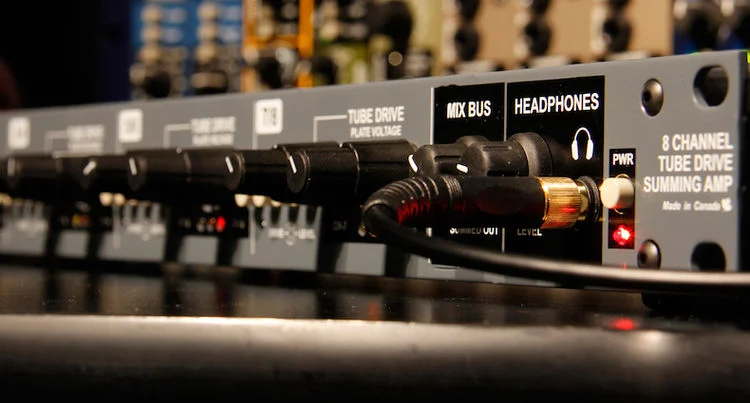





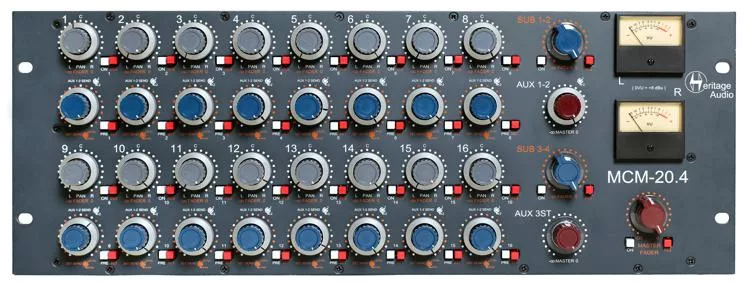
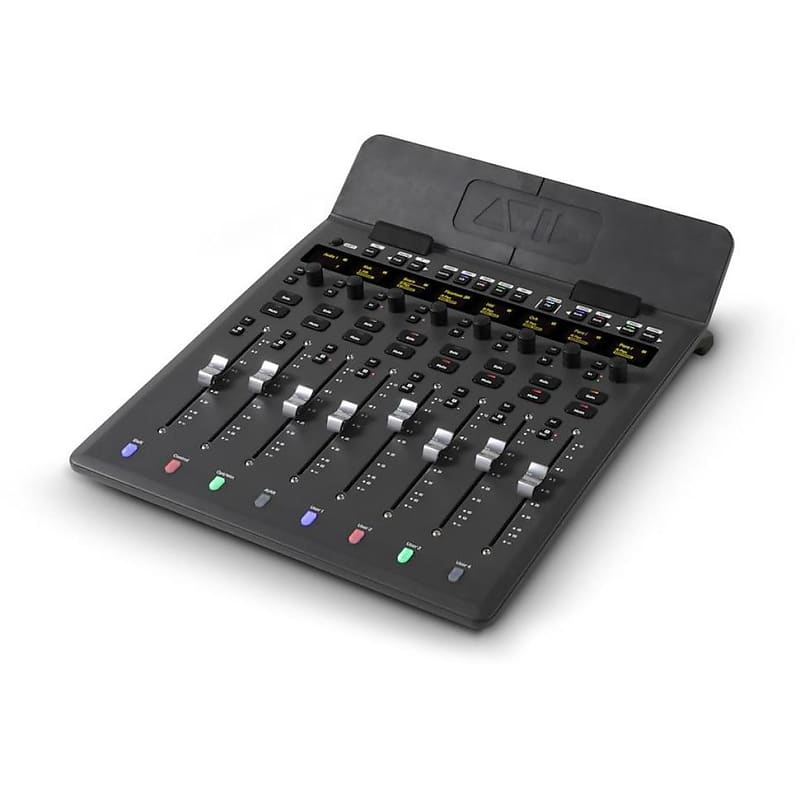




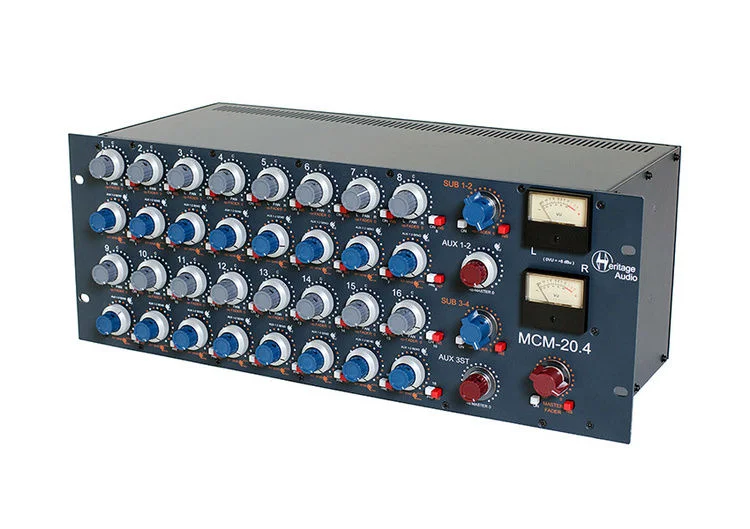
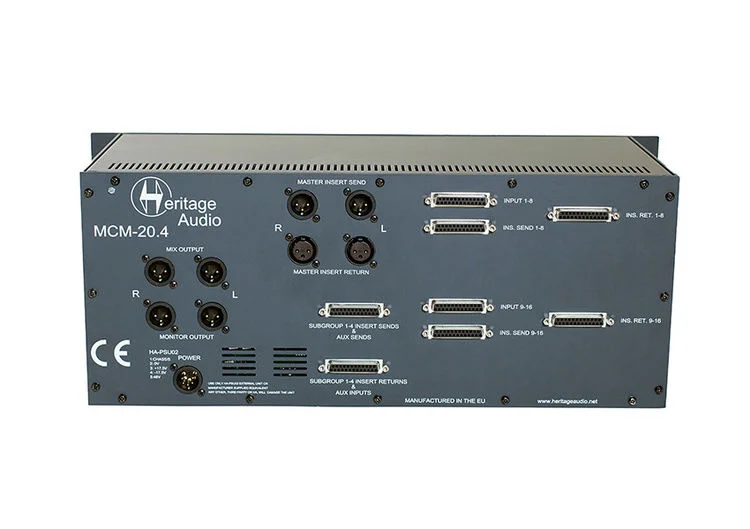








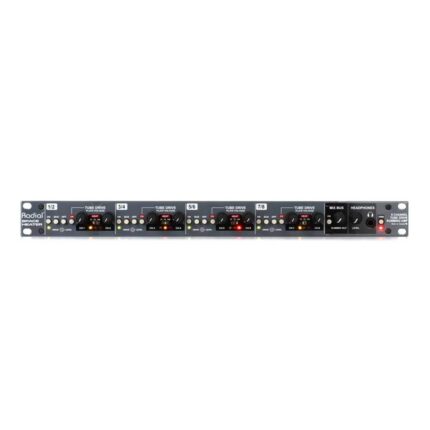
Reviews
There are no reviews yet.